Pinjalo species can be identified by having the upper and lower profiles of head rounded with the eye set toward the of head.
Lutjanus species can be identified by having the upper and lower profiles of head rounded, with the eye set toward the of head.
equally
unequally
upper profile
middle
Correct!
The correct answer is: Pinjalo species can be identified by having the upper and lower profiles of head equally rounded with the eye set toward the middle of head.
Lutjanus species can be identified by having the upper and lower profiles of head unequally rounded, with the eye set toward the upper profile of head.
Incorrect.
The correct answer is: Pinjalo species can be identified by having the upper and lower profiles of head equally rounded with the eye set toward the middle of head.
Lutjanus species can be identified by having the upper and lower profiles of head unequally rounded, with the eye set toward the upper profile of head.
Select the correct species.
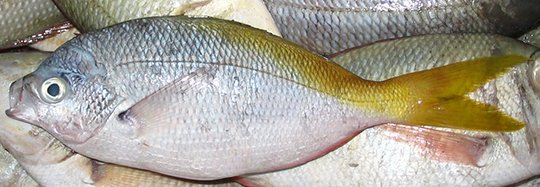
Correct!
Paracaesio xanthura can be identified by having a blue body with yellow dorsal stripe and yellow caudal fin.
Incorrect.
This species is Paracaesio xanthura.
Paracaesio xanthura can be identified by having a blue body with yellow dorsal stripe and yellow caudal fin.
Incorrect.
This species is Paracaesio xanthura.
Paracaesio xanthura can be identified by having a blue body with yellow dorsal stripe and yellow caudal fin.
Incorrect.
This species is Paracaesio xanthura.
Paracaesio xanthura can be identified by having a blue body with yellow dorsal stripe and yellow caudal fin.
Select the correct species.
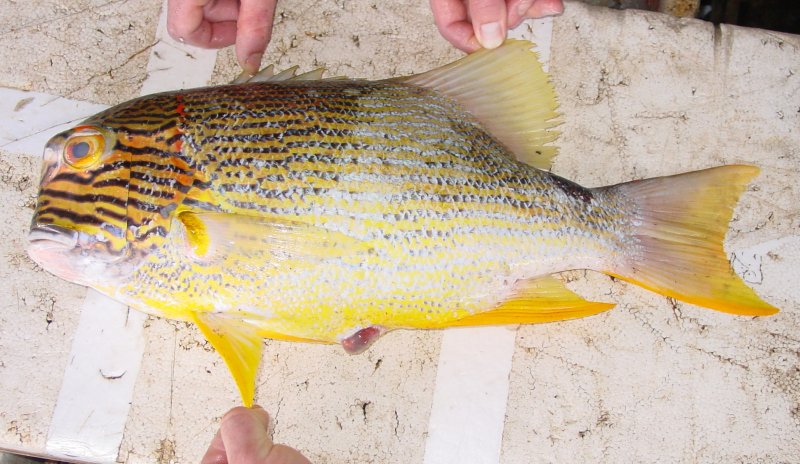
Incorrect!
This species is Symphorichthys spilurus.
Symphorichthys spilurus can be identified by having a deep body, a blunt head and being yellowish with series of bright-blue stripes on sides and head, black spot on upper caudal peduncle, orange bars on nape and between eyes.
Incorrect!
This species is Symphorichthys spilurus.
Symphorichthys spilurus can be identified by having a deep body, a blunt head and being yellowish with series of bright-blue stripes on sides and head, black spot on upper caudal peduncle, orange bars on nape and between eyes.
Correct!
Symphorichthys spilurus can be identified by having a deep body, a blunt head and being yellowish with series of bright-blue stripes on sides and head, black spot on upper caudal peduncle, orange bars on nape and between eyes.
Incorrect!
This species is Symphorichthys spilurus.
Symphorichthys spilurus can be identified by having a deep body, a blunt head and being yellowish with series of bright-blue stripes on sides and head, black spot on upper caudal peduncle, orange bars on nape and between eyes.
Select the correct species.
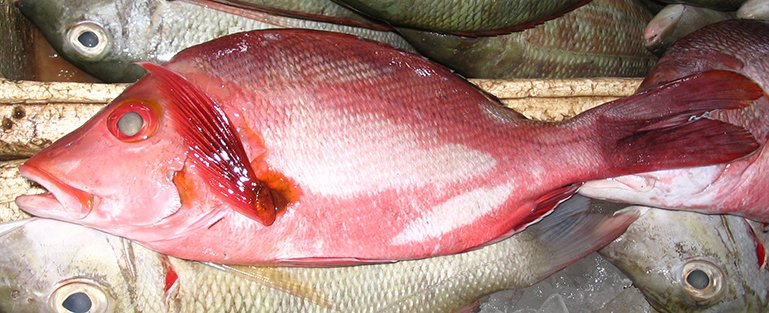
Incorrect!
This species is Lutjanus gibbus.
Lutjanus gibbus can be identified by having a snout longer and pointed, caudal fin forked with distinctly rounded lobes, a preopercular notch well developed and being red in colour.
Incorrect!
This species is Lutjanus gibbus.
Lutjanus gibbus can be identified by having a snout longer and pointed, caudal fin forked with distinctly rounded lobes, a preopercular notch well developed and being red in colour.
Incorrect!
This species is Lutjanus gibbus.
Lutjanus gibbus can be identified by having a snout longer and pointed, caudal fin forked with distinctly rounded lobes, a preopercular notch well developed and being red in colour.
Correct!
This species is Lutjanus gibbus.
Lutjanus gibbus can be identified by having a snout longer and pointed, caudal fin forked with distinctly rounded lobes, a preopercular notch well developed and being red in colour.
Place Lutjanus sebae into the drop zone.
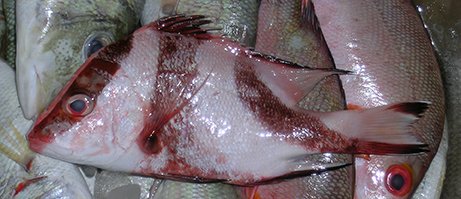

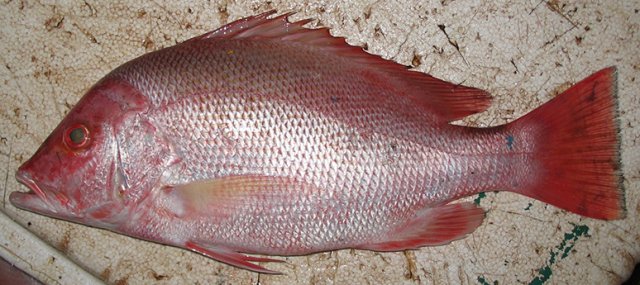
Correct!
Lutjanus sebae can be identified by having a deep body and smaller individuals white with 3 dark-red bands.
Incorrect.
Lutjanus sebae can be identified by having a deep body and smaller individuals white with 3 dark-red bands.
Select the correct species.
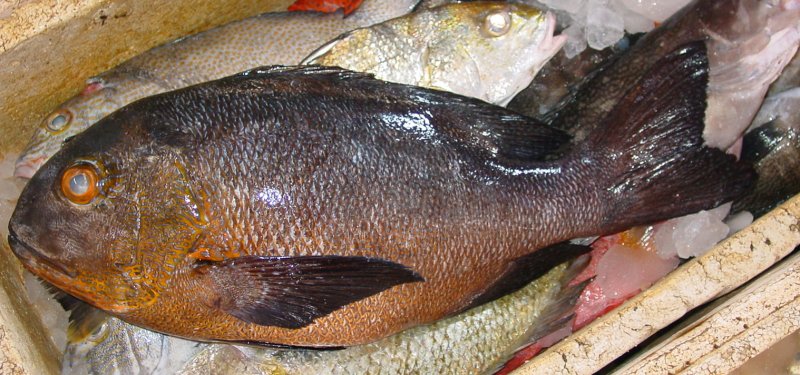
Incorrect.
This species is Macolor macularis.
Macolor macularis can be identified by having a rounded head and adults dark grey-brown dorsally grading to yellow on the head and ventrally, bluish lines and spots on head. Subadults and juveniles black with 6–10 white spots on upper side and white pattern below.
Correct!
This species is Macolor macularis.
Macolor macularis can be identified by having a rounded head and adults dark grey-brown dorsally grading to yellow on the head and ventrally, bluish lines and spots on head. Subadults and juveniles black with 6–10 white spots on upper side and white pattern below.
Incorrect.
This species is Macolor macularis.
Macolor macularis can be identified by having a rounded head and adults dark grey-brown dorsally grading to yellow on the head and ventrally, bluish lines and spots on head. Subadults and juveniles black with 6–10 white spots on upper side and white pattern below.
Incorrect.
This species is Macolor macularis.
Macolor macularis can be identified by having a rounded head and adults dark grey-brown dorsally grading to yellow on the head and ventrally, bluish lines and spots on head. Subadults and juveniles black with 6–10 white spots on upper side and white pattern below.
Select the correct species.
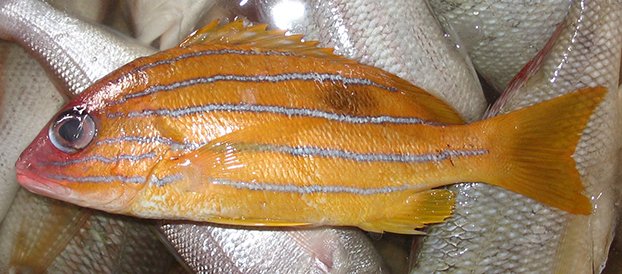
Incorrect.
This species is Lutjanus quinquelineatus.
Lutjanus quinquelineatus can be identified by being bright yellow with 5 longitudinal blue stripes on sides (2 below eye), and large black spot mostly above lateral line below soft dorsal-fin origin. Fins bright yellow.
Incorrect.
This species is Lutjanus quinquelineatus.
Lutjanus quinquelineatus can be identified by being bright yellow with 5 longitudinal blue stripes on sides (2 below eye), and large black spot mostly above lateral line below soft dorsal-fin origin. Fins bright yellow.
Incorrect.
This species is Lutjanus quinquelineatus.
Lutjanus quinquelineatus can be identified by being bright yellow with 5 longitudinal blue stripes on sides (2 below eye), and large black spot mostly above lateral line below soft dorsal-fin origin. Fins bright yellow.
Correct!
This species is Lutjanus quinquelineatus.
Lutjanus quinquelineatus can be identified by being bright yellow with 5 longitudinal blue stripes on sides (2 below eye), and large black spot mostly above lateral line below soft dorsal-fin origin. Fins bright yellow.